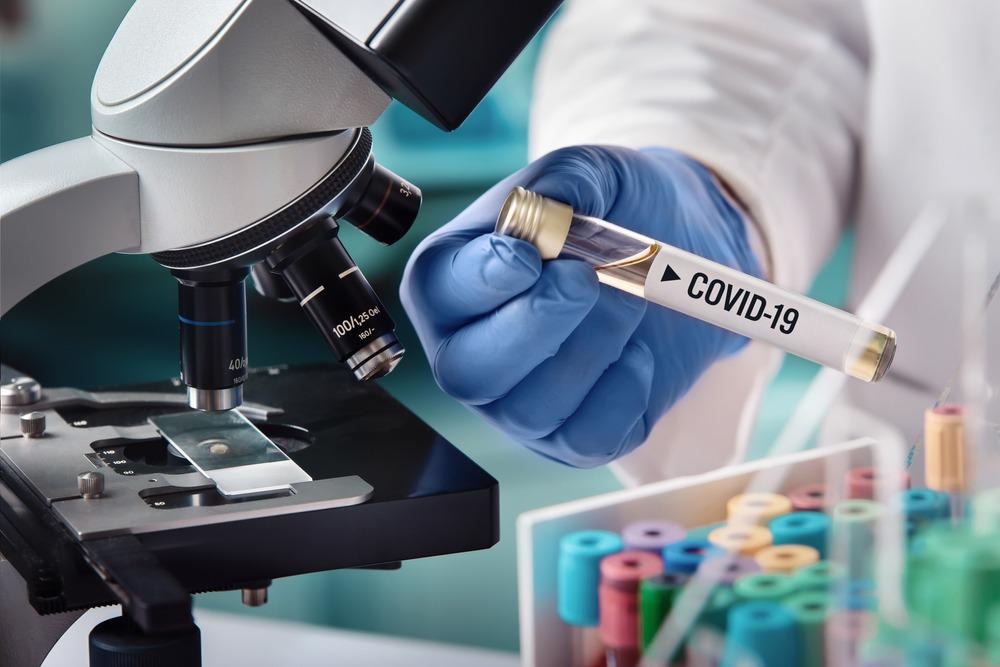Early diagnosis is important for disease outcomes across all diseases. For some, such as certain types of cancer, starting treatment early can significantly increase the overall chances of survival. In recent decades, the development of more sensitive novel diagnostic tools has made administration easier and more effective at identifying the early signs of disease. These tools have become a key focus of medical research.

Image Credit: angellodeco/Shutterstock.com
Disease detection is also important in preventing the spread of infectious diseases. The COVID-19 pandemic has highlighted the role of diagnostic tools, such as lateral flow and PCR tests. These have been used worldwide as safety measures that have allowed restrictions to safely ease and for social behavior to begin to resume as normal.
At the beginning of the pandemic, with no accessible method of disease detection, much of the world was plunged into tight restrictions, including stay-at-home rules. Methods of disease detection such as those used to prevent the spread of COVID-19 will likely play an important role in the prevention of future epidemics and pandemics.
Current Optics Technology For Real-Time Disease Detection
When light is exposed to biological tissue it interacts with it in a variety of ways. Light may scatter in an elastic or non-elastic fashion, reflect, be absorbed, or fluoresce.
Scientists have developed methods to effectively analyze these interactions to provide valuable insight into the biological activity occurring in vivo within the tissue. Over the years, innovations in such technologies have allowed scientists to diagnose diseases without the need for invasive biopsies.
Optical fibers deliver localized incident light via minimally invasive tools such as endoscopes. In the last few decades, significant advancements have been made in optical spectroscopy techniques and a vast number of medical and clinical trials have proved their efficacy.
Currently available optical spectroscopy techniques are elastic optical scattering spectroscopy (EOSS), fluorescence spectroscopy (FS), and Raman spectroscopy (RS).
Elastic optical scattering spectroscopy
EOSS delivers short pulses of light to a small volume of superficial tissue and produces results on the physical properties of tissue within seconds. It has already been developed for the detection of cancer.
Fluorescence spectroscopy
FS provides information on the state of cell metabolism, something which is altered in the presence of malignancies and can be used to detect cancer and visualize its progression or the efficacy of anti-cancer therapies.
Raman spectroscopy
RS is used to investigate the molecular signature of tissue and has been used to investigate numerous diseases.
Optical breath analysis
Optical breath analysis is another currently available technology for real-time disease detection. For many years, scientists have understood how breath offers an important opportunity for disease detection, given that we breathe out molecules that act as disease biomarkers. Optical breath analysis has been developed to detect body fat metabolism, diagnose Heliobacter infection, and detect cancer biomarkers.
Future Developments in Real-Time Disease Detection
Future developments in real-time disease detection will likely focus on establishing optical methods of detecting infectious diseases.
The COVID-19 pandemic highlighted that accessible and accurate methods of early diagnosis are vitally important to prevent global crises. Scientists are now focusing on innovating rapid, selective, and accurate methods of pathogenic virus detection to get ahead of the next potential pandemic, as experts have warned that there are many viruses in existence with the potential to trigger a pandemic.
Optical methods stand out as a potentially fruitful avenue to explore in terms of methods of disease detection. Nanotechnology-based biosensors are already used in many applications of biological detection and could be leveraged into new platforms of infectious disease detection. Optical biosensors are advantageous because they have high sensitivity and produce results in real-time.
Research is currently underway exploring how various optical methods may be adapted for virus detection, including Fourier transform infrared spectroscopy, fluorescence-based techniques, near-infrared spectroscopy, Raman spectroscopy, and surface plasmon resonance-based detection. Scientists are exploring the potential use of a variety of optical biosensors such as quantum dots (QDs), upconversion nanoparticles (UCNPs), noble metal nanoparticles, and organic fluorescent molecules-based nanoprobes in optical methods of infectious disease detection.
Advances in disease detection for viruses and infectious diseases will likely filter through into other areas of medical science. Cancer has been a keen focus of work in early diagnostics, given the importance and impact of catching the disease early. It is possible that platforms developed for tracking infectious diseases will be developed for use in cancer diagnostics or other diseases.
Optical diagnostics is in its infancy and advancements in related technologies such as nanoscience will be important to furthering this field and helping it to reach its full potential. Developments in biosensors and the Internet of Things (IoT) may also contribute to this growing field.
References and Further Reading
JILA breath analysis offers real-time disease diagnosis. [online]. Optics.org Available at: https://optics.org/news/12/10/6
Kim, J., Wales, D. and Yang, G., 2020. Optical spectroscopy for in vivo medical diagnosis—a review of the state of the art and future perspectives. Progress in Biomedical Engineering, 2(4), p.042001. https://iopscience.iop.org/article/10.1088/2516-1091/abaaa3
Song, M., Yang, M. and Hao, J., 2021. Pathogenic Virus Detection by Optical Nanobiosensors. Cell Reports Physical Science, 2(1), p.100288. https://www.sciencedirect.com/science/article/pii/S2666386420303143
Zhu, Y., Fearn, T., Mackenzie, G., Clark, B., Dunn, J., Bigio, I., Bown, S. and Lovat, L., 2009. Elastic scattering spectroscopy for detection of cancer risk in Barrett’s esophagus: experimental and clinical validation of error removal by orthogonal subtraction for increasing accuracy. Journal of Biomedical Optics, 14(4), p.044022. https://www.ncbi.nlm.nih.gov/pmc/articles/PMC2849300/
Disclaimer: The views expressed here are those of the author expressed in their private capacity and do not necessarily represent the views of AZoM.com Limited T/A AZoNetwork the owner and operator of this website. This disclaimer forms part of the Terms and conditions of use of this website.